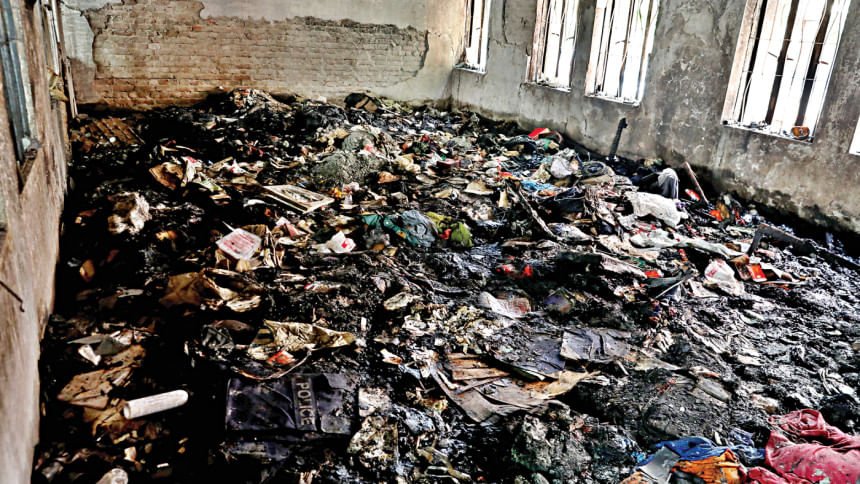Following the registration of a rape case on April 9 the previous year, Adabor police initiated an inquiry. Dhaka Medical College Hospital conducted forensic and DNA tests as part of the investigation.
Unfortunately, the investigation faced a significant setback when a massive fire, ignited during protests on August 5 amid a mass uprising, destroyed the test reports, along with 76 case documents, evidence linked to around 100 cases, and registration books.
“The destruction of evidence caused a delay in filing the charge sheet in the case. This delay enabled the accused to obtain bail from the court, much to the dismay of the victim and investigators,” stated Sub-Inspector Rakibul Islam from Adabor Police Station.
Efforts are ongoing to compile all relevant documents, but the process is proving challenging.
In addition to Adabor, 12 other police stations under Dhaka Metropolitan Police were set ablaze between August 5 and 6 the previous year, resulting in the loss of 1,200 case documents and 1,100 pieces of evidence, including forensic and DNA reports. These stations are situated in Mirpur, Mohammadpur, Badda, Jatrabari, Khilgaon, Paltan, Sher-e-Bangla Nagar, Shyampur, Tejgaon Industrial Area, Bhatara, Wari, and Khilkhet areas.
SN Nazrul Islam, additional commissioner at the DMP headquarters, mentioned, “We have managed to gather copies of almost all lost case documents. However, retrieving the pieces of evidence remains a challenge.”
“If the police fail to recover a piece of evidence in a case, the investigation team must file a general diary and provide a copy to the relevant court,” he added.
The police faced severe criticism from the public for their involvement in the violent crackdown, which included indiscriminate firing and excessive force against protesters during the uprising. Several police officers have been accused of suppressing dissent through arbitrary arrests, torture, extrajudicial killings, and enforced disappearances under the Awami League government.
The Jatrabari Police Station suffered the most damage, where a tragic fire not only destroyed vehicles, case records, and evidence but also claimed the lives of at least six law enforcers. The station’s operations remained completely suspended for two months due to the extensive destruction.
Inspector Ramzanul Haq of Jatrabari Police Station expressed the challenges of recovering crucial medical reports and forensic documents necessary for sensitive cases.
Mirpur Police Station lost all its case records and essential documents. The fire consumed around 200 motorbikes and 15 vehicles parked inside the station.
It took eight months to fully restore the station’s functionality, starting with minimal furniture and equipment.
The loss of vital evidence like forensic reports has led to delays in numerous investigations, particularly those involving sexual assault and child abuse cases. Some evidence, such as blood-stained clothes and murder weapons, are irretrievably lost.
The destruction of evidence has been communicated to the courts, and alternative measures like collecting statements from witnesses are being pursued.
According to PHQ data, 460 police stations, outposts, and other facilities nationwide were damaged during the mass uprising between August 1 and 6 the previous year. Additionally, 526 police vehicles, including pickups, motorcycles, four-wheel drive vehicles, and cars, were damaged in the fires.
Over the last 14 months, the force has acquired 200 pickup trucks, 20 four-wheel drive vehicles, 46 cars, and 152 motorcycles to replace the damaged vehicles.
Assistant Inspector General AHM Sahadat Hossain from the PHQ mentioned that new vehicles have been provided to various units to enhance patrol and crime prevention activities.
Many police officials have expressed frustration over the delayed support received even 14 months post-uprising.
“We are striving to rebuild the station, but the support we have received is insufficient,” stated a sub-inspector from Mirpur Police Station anonymously.
Police stations are still lacking patrol vehicles to adequately cover their assigned areas, impacting their ability to respond effectively to incidents.
The lingering impact of the charred police stations has created hesitancy among officers to address incidents involving mobs, requiring multiple patrol teams to respond to major situations.

